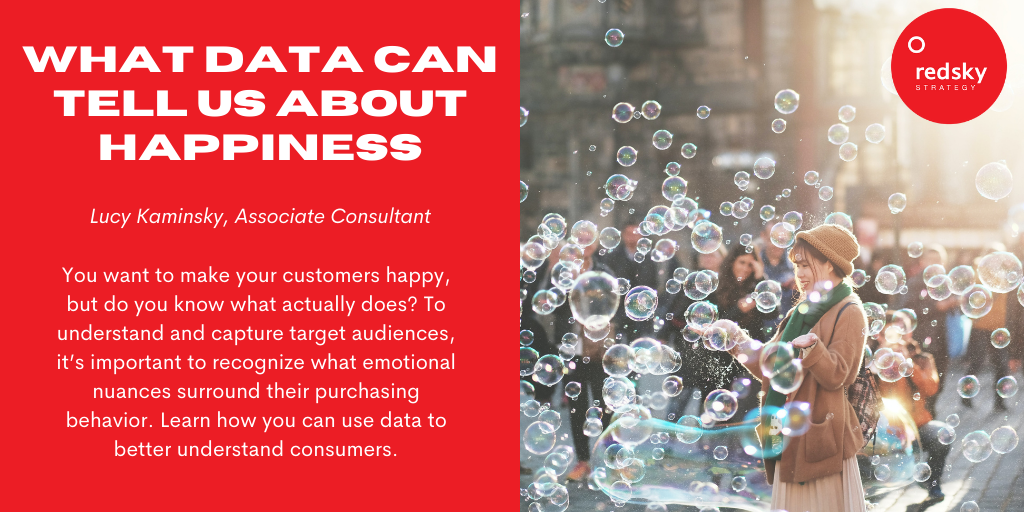News
What Data Can Tell Us About Happiness

Photo Credit: https://unsplash.com/photos/63YVMrL2d6g
Earlier this month was International Day of Happiness, the perfect time to consider the role our offerings play in our customers’ happiness. We often recognize that consumers are driven by happiness. But people define happiness differently.
When we’re communicating that a product or service can make someone’s life better, it’s important to step out of our own perspective. As marketers, we need to understand who we’re speaking to and consider the nuances in the kinds of lives different people want to have.
Basic data on happiness can help illuminate purchasing habits. Let’s start with family. When we look at people as a collective, family gives meaning to the largest percentage. However, when we study the data more closely, we can see that there are age-based differences.
According to a Pew survey looking at multiple countries, there are a handful of key patterns in age groups:
- 18-29 tend to rank friends/community within their top 3 of most important
- 30-49 mostly rank their career as being fulfilling but mention family most often
- 50-64 focus more on material well being, and physical and mental health
- 65+ point to material well-being, health, retirement and society – and mention family less
So what does this information tell us about purchasing behavior?
Consumers in the 18 to 29 age group ranking friends and community highly is something we’ve already seen rising to prominence. It’s reflected in the things Gen Z and Millennials want from brands.
For example, the popularity of video gaming platforms such as Pokemon Go, Animal Crossing, Discord/Twitch – even coworking spaces like WeWork and The Wing – are driven by the social need to find belonging and community.
Providing and communicating a sense of connection can help brands reach this audience in meaningful and ultimately productive ways.
The Psychographics of Marketing
As informative as it can be, age is still a simplification. Relying on generational labels (such as Gen X or Boomers) is the first step, not the end, to break things down by identity and values.
There are further differences between men and women, those with or without children, etc. Other demographics include:
- Income: Happiness increases with income until the household income hits approximately $100,000, then it plateaus around 86%
- Location: Research shows that life satisfaction and happiness vary widely both within and among countries. However, people in richer countries tend to be happier and richer people within countries tend to be happier. Nordic countries (Norway, Denmark, Finland, etc.) also top the self-reported life satisfaction list
- Education: 85% percent of those with an advanced degree are happy versus just 60% of those without a high school degree
Belonging to a certain demographic doesn’t necessarily mean someone shares the same beliefs and interests as others in the category. Therefore, psychographics, the study of people according to their attitudes, aspirations, and other psychological criteria, can also be key in understanding consumers’ happiness.
Another key factor to consider is how people’s values and what made them happy rapidly shifted during the pandemic. Suddenly, hobbies, being outside, and comfort were all things people prioritized to make themselves feel happier.
One study found that consumer behavior toward products considered necessities (food, hygiene, and cleaning products) was predicted by anxiety and COVID-related fear. On the other hand, consumer behavior surrounding non-necessities was predicted by depression.
Purchasing behavior is often fueled by emotion. But in order to successfully market to and target audiences, it’s essential to understand what their emotions are and what type of response they elicit.
HumanSight Into Happiness
There are some brands that are successfully tapping into their audiences’ emotions to build engagement. For instance, last year Kraft Macaroni & Cheese ran a standalone campaign requesting consumers to rethink how they approach comfort and, in turn, comfort food, emphasizing that indulging in the latter is a form of self-care.
To appeal to people, brands need to understand what their values are. To do that, we must break away from our assumptions about what makes people happy and observe the human behavior that drives these things.
Doing so may come with surprising revelations. For example, based on our assumptions of human needs, one might not expect unmarried and childless women to be the happiest subgroup of our population – but they are.
The ability to look at wanting happiness is a tool to understand underlying behaviors and how people interact with the goods and services in their lives. This speaks to a need to learn how one’s product fulfills human needs and brings them closer to happiness – whether that means offering protection, security, connection, creativity, or something else.
Interested in working with RedSky Strategy to shift your perspective and better see the world through the lens of your consumers? Our team looks forward to meeting with you and uncovering how we can use HumanSight™ to illuminate the best pathway to growth for your company.
